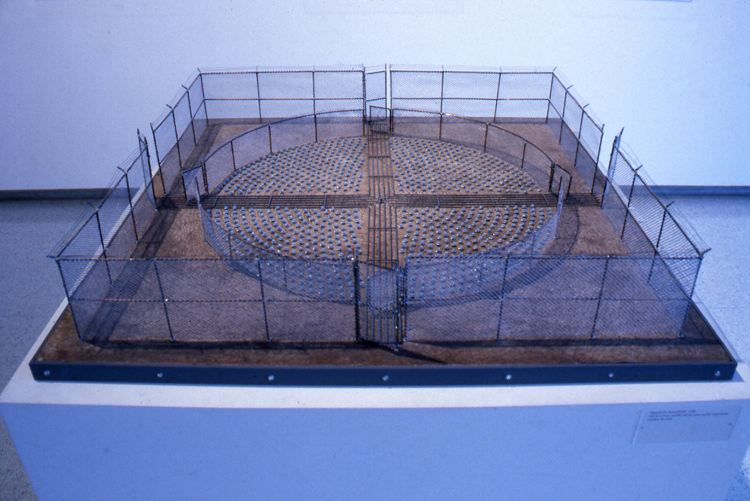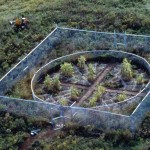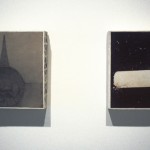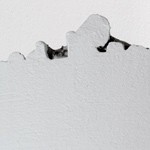
1990
proposal
State of Heaven will directly address the severe nature of ozone depletion. The project will take the form of an immense hand knotted carpet, “floating” in its specifically designed structure, and undergoing a continual state of programmed destruction. The carpet will be a convergent product of established, ancient, and advanced technologies.
Beyond the artistic and architectural demands of this project it will be essential to enlist the collaboration of scientists generating global atmospheric models, those gathering data on the changing status of the ozone layer, computer specialists, and a traditional carpet weaving community. This complex relationship will begin with scientists working with computer and satellite data who have acquired an insight into the nature and variety of cloud configurations. Clouds trace the visible path of weather phenomenon, and it is their global mechanics that will be the source of the rug’s pattern. Applicable data from this research will be placed under the directives of a program that seeks to construct two moments: one – “benign” the other “hostile.” One hypothetical model will be where destructive forces are at a wane or in a pre-conceptive state describing an invented moment of global meteorological calm. The other will represent the full fury of a world’s weather in chaos.
The appropriate image will be enhanced, processed, and transformed into a full-scale knot-per-knot pattern. The final cartoon will be square, in excess of 4000 square feet*, and have a south polar projection with a single knot equating with five square miles of the atmospheric layer. This map/rug cartoon will be taken to a cottage weaving industry in the Near East to be transmuted with natural fibers and dyes into one rug. The exhibition of the work calls for the suspension of the rug in a room with specialized lighting, curved reflective walls, and mechanical inventions within a nomadic tent-like housing. During the exhibition the carpet will be lowered and raised, to be destroyed or amended, on a scheduled basis.
Here the project returns to its satellite and computer origins. Ozone-monitoring satellites (e.g. NOAA 11), detailing the current state of concentrations and its shifting fields, will provide data of the extent of damage to be composited by a computer into a single image. This image, scaled to match the original map/rug cartoon, and the others that succeed it, will be superimposed on the rug as a “pattern of loss.” The rug will then be destroyed or amended according to these plans, its center a target reflecting chronological scars of what is an expected solar and atmospheric process active in the sky, now believed maladjusted by chemicals introduced by man. In this instance, a floating carpet, with all its magical, materialistic and aesthetic associations, will be put under systematic abuse in order to emphasize a sense of loss.
State of Heaven will administer to an urgency to objectify an untenable threat to the entire community of life. Functioning as a finite twin to its fragile stratospheric double, areas sacrificed will be in scale and concurrent with verified ozone depletion. The project will act as a tangible metaphor and monitor to engender consciousness through the systematic destruction of its symbolic sky and provide substance to an unseen but critical phase of human interaction with an imperiled habitat.
NOTES ON THE SCALE: The surface area of the atmospheric “envelope” was calculated with 6403 km. as the radius (6378 km. for the radius from the center of the Earth to its surface and an additional 25 km. above that as the average level of the ozone layer). The surface area with these values equaled 515,201,202.1 sq kilometers or 198,920,296.2 sq miles. A rug 65.7′ x 65.7′ or 4316.49 sq ft. with a single knot (one eighth of an inch square) equaling 5 sq mi. or 12.95 sq km. would be an appropriate scale model.






















 detail
detail